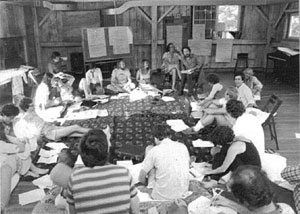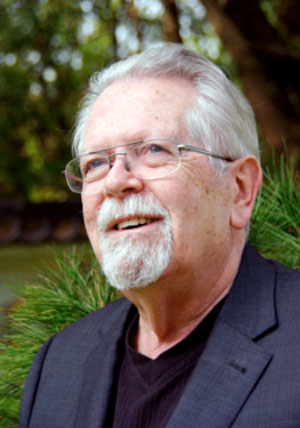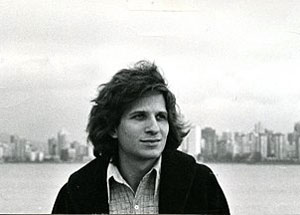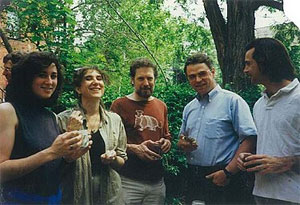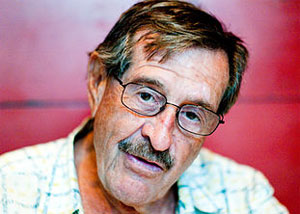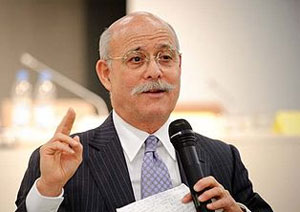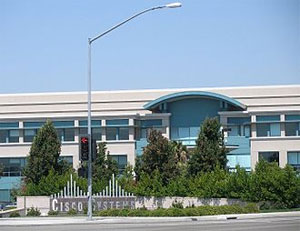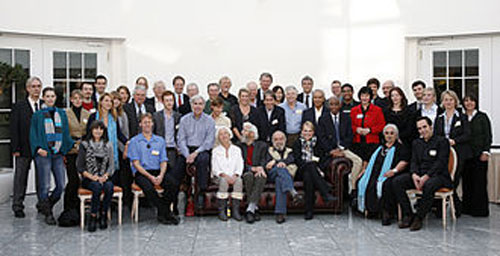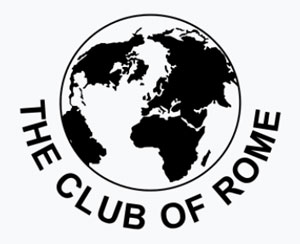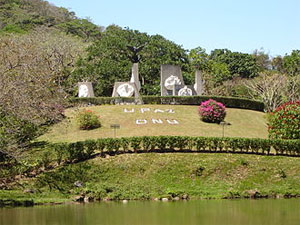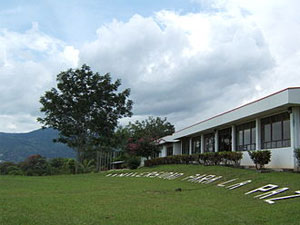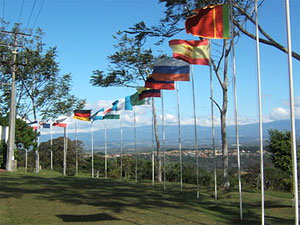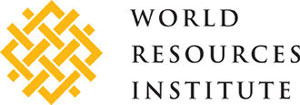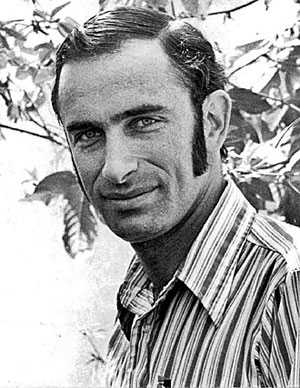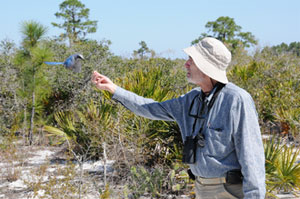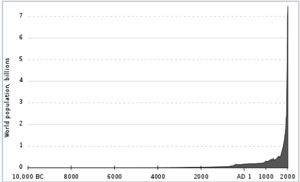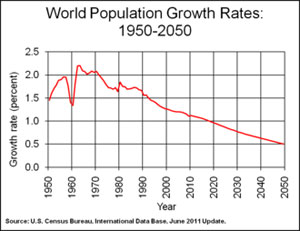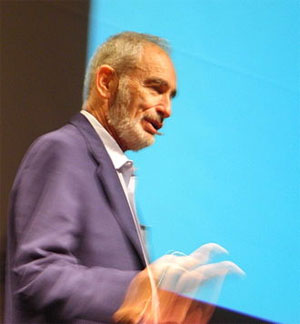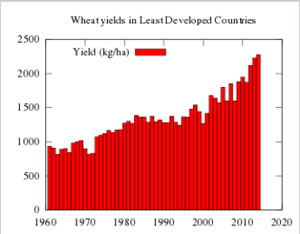by Wikipedia
Accessed: 4/17/19
NOTICE: THIS WORK MAY BE PROTECTED BY COPYRIGHT
YOU ARE REQUIRED TO READ THE COPYRIGHT NOTICE AT THIS LINK BEFORE YOU READ THE FOLLOWING WORK, THAT IS AVAILABLE SOLELY FOR PRIVATE STUDY, SCHOLARSHIP OR RESEARCH PURSUANT TO 17 U.S.C. SECTION 107 AND 108. IN THE EVENT THAT THE LIBRARY DETERMINES THAT UNLAWFUL COPYING OF THIS WORK HAS OCCURRED, THE LIBRARY HAS THE RIGHT TO BLOCK THE I.P. ADDRESS AT WHICH THE UNLAWFUL COPYING APPEARED TO HAVE OCCURRED. THANK YOU FOR RESPECTING THE RIGHTS OF COPYRIGHT OWNERS.
Just as the then Archbishop of Canterbury refused to support the 1893 World Parliament of Religions, so in 1936 Archbishop Cosmo Lang advised King Edward VIII not to preside at the World Congress of Faiths, because Christianity was the only ‘true religion.’ Most of those who attended the Congress were scholars, such as Sarvepalli Radhakrishnan, Yusuf Ali, and D. T. Suzuki. Religious leaders wanted to hold on to their followers.
Inspired by a sense of Oneness that transcends particular religions and inspires active service of others, members of WCF have continued to be gadflies urging faith communities to come together and to be more adventurous and socially concerned.
-- The World Congress of Faiths – An Overview, by Marcus Braybrooke
The same year, Humphreys founded the London Buddhist Lodge, which later changed its name to the Buddhist Society.[1] The impetus for founding the Lodge came from theosophists with whom Humphreys socialised. Both at his home and at the lodge, he played host for eminent spiritual authors such as Nicholas Roerich and Dr Sarvapalli Radhakrishnan, and for prominent Theosophists like Alice Bailey and far Eastern Buddhist authorities like D.T. Suzuki. Other regular visitors in the 1930s were the Russian singer Vladimir Rosing and the young philosopher Alan Watts,[3] and in 1931 Humphreys met the spiritual teacher Meher Baba.[4] The Buddhist Society of London is one of the oldest Buddhist organisations outside Asia.
-- Christmas Humphreys, by Wikipedia
Other Oxford colleges, notably Brasenose and Pembroke, were helped in many ways as a result of Spalding's generosity. However, the best known benefaction he and his wife made to Oxford must be the resources they provided for the establishment of the Spalding Chair in Eastern Religions and Ethics, the first occupant of which was Sir Sarvepalli Radhakrishnan. This unique position is associated with a fellowship at All Souls College....
In practical terms the task of promoting knowledge of this healing unity centred on Spalding's plans for the Union for the Study of the Great Religions ('the Union'). The Union was founded in Oxford in 1950/1951 by Sir Sarvepalli Radhakrishnan, Canon Charles E. Raven, and H. N. Spalding. Radhakrishnan was the first scholar to be elected to the Spalding Chair of Eastern Religions and Ethics. In later life he was to become Vice-President and finally President of India. He and Spalding soon established a firm personal friendship that was to continue until the latter's death. Radhakrishnan was appointed to the Oxford Chair in 1936 after Spalding had made the necessary funds available to the University....
Spalding was not an apologist for any one or other of the great religions of the world. As his friend Sarvepalli Radhakrishnan observed, HN was a deeply religious man, whose religion 'was not confined to a code of conduct and respect for outward forms. These latter were experienced as opening the door to the truths of spirit. Man is not a finished creation. He is an experiment of which he can be partly the creator. Religion is essentially the art and theory of the re-making of man. It assumes man's ability to change himself.'
-- The Spalding Trust and the Union for the Study of the Great Religions: H.N. Spalding's Pioneering Vision, by Edward Hulmes
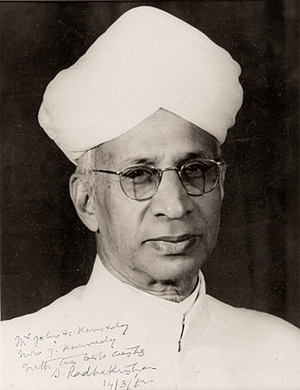
His Excellency
Dr. Sarvepalli Radhakrishnan
Photograph of Sarvepalli Radhakrishnan presented to First Lady Jacqueline Kennedy in 1962.jpg
Radhakrishnan in 1962
2nd President of India
In office
14 May 1962 – 13 May 1967
Prime Minister Jawaharlal Nehru
Gulzarilal Nanda (Acting)
Lal Bahadur Shastri
Gulzarilal Nanda (Acting)
Indira Gandhi
Vice President Zakir Hussain
Preceded by Rajendra Prasad
Succeeded by Zakir Hussain
1st Vice President of India
In office
13 May 1952 – 12 May 1962
President Rajendra Prasad
Prime Minister Jawaharlal Nehru
Succeeded by Zakir Hussain
Personal details
Born 5 September 1888
Thiruttani , Madras Presidency, British India[1]
Died 17 April 1975 (aged 86)
Madras, Tamil Nadu, India
Political party Independent
Spouse(s) Sivakamu (Died 1956)
Children 5 (daughters) 1 (Son) Sarvepalli Gopal
Parents Father : Veerasamy
Mother : Seethammal
Alma mater University of Madras
Profession
PhilosopherProfessor
Awards Bharat Ratna Ribbon.svg Bharat Ratna (1954)
Templeton Prize (1975)
Sarvepalli Radhakrishnan (5 September 1888 – 17 April 1975) was an Indian philosopher and statesman[2] who served as the first Vice President of India (1952–1962) and the second President of India (1962-1967).[web 1]
One of India's most distinguished twentieth-century scholars of comparative religion and philosophy,[3][web 2] after completing his education at Madras Christian College in 1911, he became Assistant Professor and later Professor of Philosophy at Madras Presidency College then subsequently Professor of Philosophy at the University of Mysore (1918-1921); the King George V Chair of Mental and Moral Science at the University of Calcutta (1921–1932) and Spalding Professor of Eastern Religion and Ethics at University of Oxford (1936–1952) by which he became the first Indian to hold a professorial chair at the University of Oxford. He was Upton Lecturer at Manchester College, Oxford in 1926, 1929, and 1930. In 1930 he was appointed Haskell lecturer in Comparative Religion at the University of Chicago.[4]
His philosophy was grounded in Advaita Vedanta, reinterpreting this tradition for a contemporary understanding.[web 2] He defended Hinduism against "uninformed Western criticism",[5] contributing to the formation of contemporary Hindu identity.[6] He has been influential in shaping the understanding of Hinduism, in both India and the west, and earned a reputation as a bridge-builder between India and the West.[7]
Radhakrishnan was awarded several high awards during his life, including a knighthood in 1931, the Bharat Ratna, the highest civilian award in India, in 1954, and honorary membership of the British Royal Order of Merit in 1963. He was also one of the founders of Helpage India, a non profit organisation for elderly underprivileged in India. Radhakrishnan believed that "teachers should be the best minds in the country". Since 1962, his birthday is being celebrated in India as Teachers' Day on 5th September.[web 3]
Biography
Early life
Sarvepalli Radhakrishnan was born in a Telugu-speaking[8] Niyogi Brahmin family, in Tiruttani in Madras Presidency.[9][10][11] His surname was Sarvepalli, for his forefathers were from Sarvepalli, a village fifteen miles from Nellore town of Andhra Pradesh. His grand father migrated to a village near Tiruttani in erstwhile Chittoor district of the Madras Presidency.[12][13][14] His father's name was Sarvepalli Veeraswami and his mother's name was Sarvepalli Sita (Sitamma). His early years were spent in Thiruttani and Tirupati. His father was a subordinate revenue official in the service of a local zamindar (local landlord). His primary education was at K.V High School at Thiruttani. In 1896 he moved to the Hermansburg Evangelical Lutheran Mission School in Tirupati and Government Higher Secondary School, Walajapet.[15]
Education
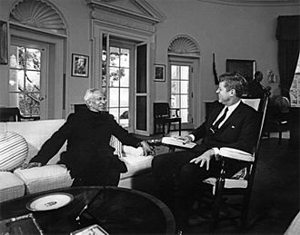
Indian President Sarvepalli Radhakrishnan with US President John F. Kennedy in the Oval Office, 1963
Radhakrishnan was awarded scholarships throughout his academic life. He joined Voorhees College in Vellore but switched to the Madras Christian College at the age of 17. He graduated from there in 1906 with a Voorha master's degree in Philosophy, being one of its most distinguished alumni.[16]
Radhakrishnan studied philosophy by chance rather than choice. Being a financially constrained student, when a cousin who graduated from the same college passed on his philosophy textbooks in to Radhakrishnan, it automatically decided his academic course.[17][18]
Radhakrishnan wrote his thesis for the M.A. degree on "The Ethics of the Vedanta and its Metaphysical Presuppositions".[19] It "was intended to be a reply to the charge that the Vedanta system had no room for ethics."[20] He was afraid that this M.A. thesis would offend his philosophy professor, Dr. Alfred George Hogg. Instead, Hogg commended Radhakrishnan on having done most excellent work.[citation needed] Radhakrishnan's thesis was published when he was only twenty. According to Radhakrishnan himself, the criticism of Hogg and other Christian teachers of Indian culture "disturbed my faith and shook the traditional props on which I leaned."[20] Radhakrishnan himself describes how, as a student,
The challenge of Christian critics impelled me to make a study of Hinduism and find out what is living and what is dead in it. My pride as a Hindu, roused by the enterprise and eloquence of Swami Vivekananda, was deeply hurt by the treatment accorded to Hinduism in missionary institutions.[5]
This led him to his critical study of Indian philosophy and religion[20] and a lifelong defence of Hinduism against "uninformed Western criticism".[5]
Marriage and family
Radhakrishnan was married to Sivakamu,[note 1] a distant cousin, at the age of 16.[21] As per tradition the marriage was arranged by the family. The couple had five daughters and a son, Sarvepalli Gopal. Sarvepalli Gopal went on to a notable career as a historian. Sivakamu died in 1956. They were married for over 51 years.
Academic career
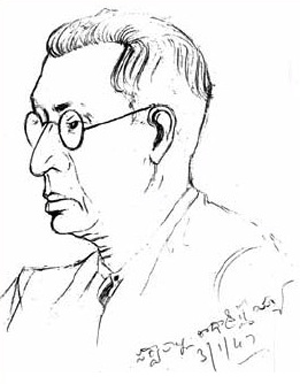
Sarvepalli Radhakrishnan drawn by Bujjai and signed by Radhakrishnan in Telugu as "Radhakrishnayya".
In April 1909, Sarvepalli Radhakrishnan was appointed to the Department of Philosophy at the Madras Presidency College. Thereafter, in 1918, he was selected as Professor of Philosophy by the University of Mysore, where he taught at its Maharaja's College, Mysore. [web 4][22] By that time he had written many articles for journals of repute like The Quest, Journal of Philosophy and the International Journal of Ethics. He also completed his first book, The Philosophy of Rabindranath Tagore. He believed Tagore's philosophy to be the "genuine manifestation of the Indian spirit". His second book, The Reign of Religion in Contemporary Philosophy was published in 1920.
In 1921 he was appointed as a professor in philosophy to occupy the King George V Chair of Mental and Moral Science at the University of Calcutta. He represented the University of Calcutta at the Congress of the Universities of the British Empire in June 1926 and the International Congress of Philosophy at Harvard University in September 1926. Another important academic event during this period was the invitation to deliver the Hibbert Lecture on the ideals of life which he delivered at Manchester College, Oxford in 1929 and which was subsequently published in book form as An Idealist View of Life.
In 1929 Radhakrishnan was invited to take the post vacated by Principal J. Estlin Carpenter at Manchester College. This gave him the opportunity to lecture to the students of the University of Oxford on Comparative Religion. For his services to education he was knighted by George V in the June 1931 Birthday Honours,[web 5] and formally invested with his honour by the Governor-General of India, the Earl of Willingdon, in April 1932.[web 6] However, he ceased to use the title after Indian independence,[23]:9 preferring instead his academic title of 'Doctor'.
He was the Vice-Chancellor of Andhra University from 1931 to 1936. In 1936 Radhakrishnan was named Spalding Professor of Eastern Religions and Ethics at the University of Oxford, and was elected a Fellow of All Souls College. That same year, and again in 1937, he was nominated for the Nobel Prize in Literature, although this nomination process, as for all laureates, was not public at the time. Further nominations for the award would continue steadily into the 1960s. In 1939 Pt. Madan Mohan Malaviya invited him to succeed him as the Vice-Chancellor of Banaras Hindu University (BHU).[24] He served as its Vice-Chancellor till January 1948.
Political career
See also: British Raj, Indian independence movement, and Indian Independence Act 1947
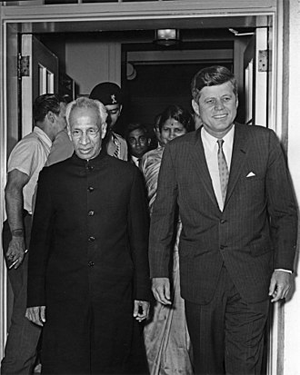
President of United States John F. Kennedy and President of India, Dr. Sarvepalli Radhakrishnan (left), depart the White House following a meeting. Minister of External Affairs of India, Lakshmi N. Menon, walks behind President Kennedy at West Wing Entrance, White House, Washington, D.C on 4 June 1963
Radhakrishnan started his political career "rather late in life", after his successful academic career.[5] His international authority preceded his political career. In 1931 he was nominated to the League of Nations Committee for Intellectual Cooperation, where after "in Western eyes he was the recognized Hindu authority on Indian ideas and a persuasive interpreter of the role of Eastern institutions in contemporary society."[5] When India became independent in 1947, Radhakrishnan represented India at UNESCO (1946–52) and was later Ambassador of India to the Soviet Union, from 1949 to 1952. He was also elected to the Constituent Assembly of India. Radhakrishnan was elected as the first Vice-President of India in 1952, and elected as the second President of India (1962–1967).
Radhakrishnan did not have a background in the Congress Party, nor was he active in the struggle against British rules. He was the politician in shadow. His motivation lay in his pride of Hindu culture, and the defence of Hinduism against "uninformed Western criticism".[5] According to Brown,
He had always defended Hindu culture against uninformed Western criticism and had symbolized the pride of Indians in their own intellectual traditions.[5]
Teachers' Day
When he became the President of India, some of his students and friends requested him to allow them to celebrate his birthday, on 5 September. He replied,
Instead of celebrating my birthday, it would be my proud privilege if September 5th is observed as Teachers' Day.[25]
His birthday has since been celebrated as Teachers' Day in India.[web 7]
Charity
Along with Ghanshyam Das Birla and some other social workers in the pre-independence era, Radhakrishnan formed the Krishnarpan Charity Trust.
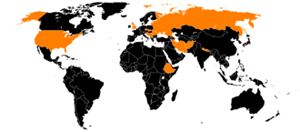
As President of India, Radhakrishnan made 11 state visits including visits to both the US and the USSR.[web 8]
Role in Constituent Assembly[26]
He was against State institutions imparting denominational religious instruction as it was against the secular vision of the Indian State.[27]
Philosophy
Radhakrishnan tried to bridge eastern and western thought,[28] defending Hinduism against "uninformed Western criticism",[5] but also incorporating Western philosophical and religious thought.[29]
Advaita Vedanta
Radhakrishnan was one of the most prominent spokesmen of Neo-Vedanta.[30][31][32] His metaphysics was grounded in Advaita Vedanta, but he reinterpreted Advaita Vedanta for a contemporary understanding.[web 2] He acknowledged the reality and diversity of the world of experience, which he saw as grounded in and supported by the absolute or Brahman.[web 2][note 2] Radhakrishnan also reinterpreted Shankara's notion of maya. According to Radhakrishnan, maya is not a strict absolute idealism, but "a subjective misperception of the world as ultimately real."[web 2]
Intuition and religious experience
See also: Mystical experience and Religious experience
"Intuition", or anubhava,[web 2] synonymously called "religious experience",[web 2] has a central place in Radhakrishnan's philosophy as a source of knowledge which is not mediated by conscious thought.[29] His specific interest in experience can be traced back to the works of William James (1842–1910), Francis Herbert Bradley (1846–1924), Henri Bergson (1859–1941), and Friedrich von Hügel (1852–1925),[29] and to Vivekananda,[34] who had a strong influence on Radhakrisnan's thought.[35] According to Radhakrishnan, intuition is of a self-certifying character (svatassiddha), self-evidencing (svāsaṃvedya), and self-luminous (svayam-prakāsa).[web 2] In his book An Idealist View of Life, he made a powerful case for the importance of intuitive thinking as opposed to purely intellectual forms of thought.[web 9] According to Radhakrishnan, intuition plays a specific role in all kinds of experience.[web 2] Radhakrishnan discernes five sorts of experience:[web 2]
1. Cognitive Experience:
2. Sense Experience
3. Discursive Reasoning
4. Intuitive Apprehension
5. Psychic Experience
6. Aesthetic Experience
7. Ethical Experience
8. Religious Experience
Classification of religions
For Radhakrishnan, theology and creeds are intellectual formulations, and symbols of religious experience or "religious intuitions".[web 2] Radhakrishnan qualified the variety of religions hierarchically according to their apprehension of "religious experience", giving Advaita Vedanta the highest place:[web 2]{{refn|group=note|This qualification is not unique to Radhakrishnan. It was developed by nineteenth-century Indologists,[36][37] and was highly influential in the understanding of Hinduism, both in the west and in India.[30][38]
1. The worshipers of the Absolute
2. The worshipers of the personal God
3. The worshipers of the incarnations like Rama, Kṛiṣhṇa, Buddha
4. Those who worship ancestors, deities and sages
5. The worshipers of the petty forces and spirits
Radhakrishnan saw Hinduism as a scientific religion based on facts, apprehended via intuition or religious experience.[web 2] According to Radhakrishnan, "[ i]f philosophy of religion is to become scientific, it must become empirical and found itself on religious experience".[web 2] He saw this empiricism exemplified in the Vedas:
The truths of the ṛṣis are not evolved as the result of logical reasoning or systematic philosophy but are the products of spiritual intuition, dṛṣti or vision. The ṛṣis are not so much the authors of the truths recorded in the Vedas as the seers who were able to discern the eternal truths by raising their life-spirit to the plane of universal spirit. They are the pioneer researchers in the realm of the spirit who saw more in the world than their followers. Their utterances are not based on transitory vision but on a continuous experience of resident life and power. When the Vedas are regarded as the highest authority, all that is meant is that the most exacting of all authorities is the authority of facts.[web 2]
From his writings collected as The Hindu View of Life, Upton Lectures, Delivered at Manchester College, Oxford, 1926: "Hinduism insists on our working steadily upwards in improving our knowledge of God. The worshippers of the absolute are of the highest rank; second to them are the worshippers of the personal God; then come the worshippers of the incarnations of Rama, Krishna, Buddha; below them are those who worship deities, ancestors, and sages, and lowest of all are the worshippers of petty forces and spirits. The deities of some men are in water (i.e., bathing places), those of the most advanced are in the heavens, those of the children (in religion) are in the images of wood and stone, but the sage finds his God in his deeper self. The man of action finds his God in fire, the man of feeling in the heart, and the feeble minded in the idol, but the strong in spirit find God everywhere". The seers see the supreme in the self, and not the images."
To Radhakrishnan, Advaita Vedanta was the best representative of Hinduism, as being grounded in intuition, in contrast to the "intellectually mediated interpretations"[web 2] of other religions.[web 2]{{refn|group=note|Anubhava is a central term in Shankara's writings. According to several modern interpretators, especially Radakrishnan, Shankara emphasises the role of personal experience (anubhava) in ascertaining the validity of knowledge.[39] Yet, according to Rambacham himself, sruti, or textual authority, is the main source of knowledge for Shankara.[34] He objected against charges of "quietism"[note 3] and "world denial", instead stressing the need and ethic of social service, giving a modern interpretation of classical terms as tat-tvam-asi.[32] According to Radhakrishnan, Vedanta offers the most direct intuitive experience and inner realisation, which makes it the highest form of religion:
The Vedanta is not a religion, but religion itself in its most universal and deepest significance.[web 2]
Radhakrishnan saw other religions, "including what Radhakrishnan understands as lower forms of Hinduism,"[web 2] as interpretations of Advaita Vedanta, thereby Hinduising all religions.[web 2]
Although Radhakrishnan was well-acquainted with western culture and philosophy, he was also critical of them. He stated that Western philosophers, despite all claims to objectivity, were influenced by theological influences of their own culture.[40]
Controversy on Indian Philosophy book
In the issue of the Modern Review, January 1929 a certain Jadunath Sinha made a sensational claim that his own thesis was copied by his teacher Sarvepalli Radhakrishnan on Indian Philosophy book.[41][42] He said that none other than Sarvepalli Radhakrishnan had plagiarised from him. His Indian Philosophy Vol. II had lifted several passages from bangali philosopher Jadunath Sinha's thesis. [43][note 4][44] The controversy spilled over upto February, March and April issues of the magazine too.[45]
In August 1929, Sinha sued Radhakrishnan on this issue.[46][note 5] Radhakrishnan also counter-sued both Jadunath Sinha and the editor of Modern Review, Ramnath Chattopadhyay.[45]
Then without any conclusion the court hushed up this sensational issue as Radhakrishnan’s stature.[42][45]
Influence
Radhakrishnan was one of India's best and most influential twentieth-century scholars of comparative religion and philosophy.[3][web 2]
Radhakrishnan's defence of the Hindu traditions has been highly influential,[29] both in India and the western world. In India, Radhakrishnan's ideas contributed to the formation of India as a nation-state.[47] Radhakrishnan's writings contributed to the hegemonic status of Vedanta as "the essential worldview of Hinduism".[48] In the western world, Radhakrishnan's interpretations of the Hindu tradition, and his emphasis on "spiritual experience", made Hinduism more readily accessible for a western audience, and contributed to the influence Hinduism has on modern spirituality:
In figures such as Vivekananda and Radhakrishnan we witness Vedanta traveling to the West, where it nourished the spiritual hunger of Europeans and Americans in the early decades of the twentieth century.[48]
Appraisal
Radhakrishnan has been highly appraised. According to Paul Artur Schillp:
Nor would it be possible to find a more excellent example of a living "bridge" between the East and the West than Professor Radhakrishnan. Steeped, as Radhakrishnan has been since his childhood, in the life, traditions, and philosophical heritage of his native India, he has also struck deep roots in Western philosophy, which he has been studying tirelessly ever since his undergraduate college-days in Madras Christian College, and in which he is as thoroughly at home as any Western philosopher.[28]
And according to Hawley:
Radhakrishnan's concern for experience and his extensive knowledge of the Western philosophical and literary traditions has earned him the reputation of being a bridge-builder between India and the West. He often appears to feel at home in the Indian as well as the Western philosophical contexts, and draws from both Western and Indian sources throughout his writing. Because of this, Radhakrishnan has been held up in academic circles as a representative of Hinduism to the West. His lengthy writing career and his many published works have been influential in shaping the West's understanding of Hinduism, India, and the East.[web 2]
Criticism and context
Radhakrishnan's ideas have also received criticism and challenges, for their perennialist[30][49] and universalist claims,[50][51] and the use of an East-West dichotomy.[web 2]
Perennialism
Main article: Perennial philosophy
According to Radhakrishnan, there is not only an underlying "divine unity"[49] from the seers of the Upanishads up to modern Hindus like Tagore and Gandhi,[49] but also "an essential commonality between philosophical and religious traditions from widely disparate cultures."[30] This is also a major theme in the works of Rene Guenon, the Theosophical Society, and the contemporary popularity of eastern religions in modern spirituality.[30][29] Since the 1970s, the Perennialist position has been criticised for its essentialism. Social-constructionists give an alternative approach to religious experience, in which such "experiences" are seen as being determined and mediated by cultural determants:[29][52][note 6] As Michaels notes: {{quote|Religions, too, rely not so much on individual experiences or on innate feelings – like a sensus numinosus (Rudolf Otto) – but rather on behavioral patterns acquired and learned in childhood.[53]
Rinehart also points out that "perennialist claims notwithstanding, modern Hindu thought is a product of history",[49] which "has been worked out and expressed in a variety of historical contexts over the preceding two hundreds years."[49] This is also true for Radhakrishan, who was educated by missionaries[54] and, like other neo-Vedantins used the prevalent western understanding of India and its culture to present an alternative to the western critique.[30][55]
Universalism, communalism and Hindu nationalism
According to Richard King, the elevation of Vedanta as the essence of Hinduism, and Advaita Vedanta as the "paradigmatic example of the mystical nature of the Hindu religion"[56] by colonial Indologists but also neo-Vedantins served well for the Hindu nationalists, who further popularised this notion of Advaita Vedanta as the pinnacle of Indian religions.[57] It
...provided an opportunity for the construction of a nationalist ideology that could unite Hindus in their struggle against colonial oppression.[58]
This "opportunity" has been criticised. According to Sucheta Mazumdar and Vasant Kaiwar,
... Indian nationalist leaders continued to operate within the categorical field generated by politicized religion [...] Extravagant claims were made on behalf of Oriental civilization. Sarvepalli Radhakrishnan's statement – "[t]he Vedanta is not a religion but religion itself in its "most universal and deepest significance" – is fairly typical.[50]
Rinehart also criticises the inclusivism of Radhakrishnan's approach, since it provides "a theological scheme for subsuming religious difference under the aegis of Vedantic truth."[51][note 7] According to Rinehart, the consequence of this line of reasoning is communalism,[51] the idea that "all people belonging to one religion have common economic, social and political interests and these interests are contrary to the interests of those belonging to another religion."[web 10] Rinehart notes that Hindu religiosity plays an important role in the nationalist movement,[51] and that "the neo-Hindu discource is the unintended consequence of the initial moves made by thinkers like Rammohan Roy and Vivekananda."[51] Yet Rinehart also points out that it is
{{quote|...clear that there isn't a neat line of causation that leads from the philosophies of Rammohan Roy, Vivekananda and Radhakrishnan to the agenda of [...] militant Hindus.[59]{{refn|group=note|Neither is Radhakrishnan's "use" of religion in the defence of Asian culture and society against colonialism unique for his person, or India in general. The complexities of Asian nationalism are to be seen and understood in the context of colonialism, modernisation and nation-building. See, for example, Anagarika Dharmapala, for the role of Theravada Buddhism in Sri Lankese struggle for independence,[60] and D.T. Suzuki, who conjuncted Zen to Japanese nationalism and militarism, in defence against both western hegemony and the pressure on Japanese Zen during the Meiji Restoration to conform to Shinbutsu Bunri.[61][62]
Post-colonialism
Main articles: Orientalism and Post-colonialism
Colonialism left deep traces in the hearts and minds of the Indian people, influencing the way they understood and represented themselves.[30] The influences of "colonialist forms of knowledge"[web 2] can also be found in the works of Radhakrishnan. According to Hawley, Radhakrishnan's division between East and West, the East being spiritual and mystical, and the West being rationt and colonialist forms of knowledge constructed during the 18th and 19th centuries. Arguably, these characterizations are "imagined" in the sense that they reflect the philosophical and religious realities of neither "East' nor West."[web 2]
Since the 1990s, the colonial influences on the 'construction' and 'representation' of Hinduism have been the topic of debate among scholars of Hinduism Western Indologists are trying to come to more neutral and better-informed representations of India and its culture, while Indian scholars are trying to establish forms of knowledge and understanding which are grounded in and informed by Indian traditions, instead of being dominated by western forms of knowledge and understanding.[37][note 8]
Plagiarism controversy
Radhakrishnan's student Jadunath Sinha alleged that Radhakrishnan copied text from his doctoral thesis, Indian Psychology of Perception published in 1925, into his book Indian Philosophy published in 1927. Sinha filed a case in the Calcutta High Court claiming damages for Rs 20,000. Radhakrishnan filed counter case for defamation of character demanding Rs 100,000 from Sinha. Though Sinha's case was strong as many of his articles were already published, the high cost of litigation along with intervention of Syama Prasad Mookerjee, who mediated between them made them, settle the issue out of court.[63][64][65]
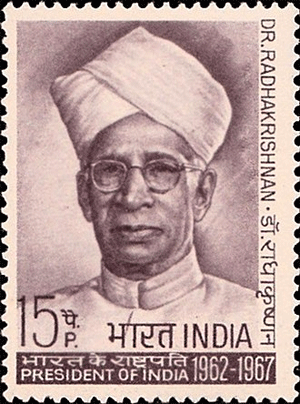
Radhakrishnan on a 1967 stamp of India
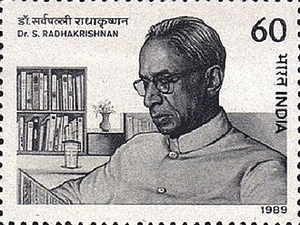
Radhakrishnan on a 1989 stamp of India
Awards and honours
• 1931: appointed a Knight Bachelor in ,[web 5] although he ceased to use the title "Sir" after India attained independence.[66]
• 1933-37: Nominated five times for the Nobel Prize in Literature.
• 1938: elected Fellow of the British Academy.
• 1954: The Bharat Ratna, the highest civilian award in India.[web 3]
• 1954: Order Pour le Mérite for Arts and Sciences (Germany)[web 11]
• 1961: the Peace Prize of the German Book Trade.
• 1962: Institution of Teacher's Day in India, yearly celebrated at 5 September, Radhakrishnan's birthday, in honour of Radhakrishnan's belief that "teachers should be the best minds in the country".[web 3]
• 1963: the British Order of Merit.
• 1968: Sahitya Akademi fellowship, The highest honour conferred by the Sahitya Akademi on a writer (he is the first person to get this award)
• 1975: the Templeton Prize in 1975, a few months before his death, for advocating non-aggression and conveying "a universal reality of God that embraced love and wisdom for all people."[web 12][note 9] He donated the entire amount of the Templeton Prize to Oxford University.
• 1989: institution of the Radhakrishnan Scholarships by Oxford University in the memory of Radhakrishnan. The scholarships were later renamed the "Radhakrishnan Chevening Scholarships".[67]
• He was nominated sixteen times for the Nobel prize in literature, and eleven times for the Nobel Peace prize.[68][69]
Quotes
• "It is not God that is worshipped but the authority that claims to speak in His name. Sin becomes disobedience to authority not violation of integrity."[70]
• "Reading a book gives us the habit of solitary reflection and true enjoyment."[71]
• "When we think we know, we cease to learn."[72]
• "A literary genius, it is said, resembles all, though no one resembles him."[73]
• "There is nothing wonderful in my saying that Jainism was in existence long before the Vedas were composed."[74]
• "A life of joy and happiness is possible only on the basis of knowledge .
Bibliography
Works by Radhakrishnan
• The philosophy of Rabindranath Tagore (1918), Macmillan, London, 294 pages
• Indian Philosophy (1923) Vol.1, 738 pages. (1927) Vol 2, 807 pages. Oxford University Press.
• The Hindu View of Life (1926), 92 pages
• An Idealist View of Life (1929), 351 pages
• Eastern Religions and Western Thought (1939), Oxford University Press, 396 pages
• Religion and Society (1947), George Allen and Unwin Ltd., London, 242 pages
• The Bhagavadgītā: with an introductory essay, Sanskrit text, English translation and notes (1948), 388 pages
• The Dhammapada (1950), 194 pages, Oxford University Press
• The Principal Upanishads (1953), 958 pages, HarperCollins Publishers Limited
• Recovery of Faith (1956), 205 pages
• A Source Book in Indian Philosophy (1957), 683 pages, Princeton University Press, with Charles A. Moore as co-editor.
• Religion, Science & Culture (1968), 121 pages
Biographies and monographs on Radhakrishnan
Several books have been published on Sarve Radhakrishnan:
• Murty, K. Satchidananda; Ashok Vohra (1990). Radhakrishnan: his life and ideas. SUNY Press. ISBN 978-0-7914-0343-3.
• Minor, Robert Neil (1987). Radhakrishnan: a religious biography. SUNY Press. ISBN 978-0-88706-554-5.
• Gopal, Sarvepalli (1989). Radhakrishnan: a biography. Unwin Hyman. ISBN 978-0-04-440449-1.
• Pappu, S.S. Rama Rao (1995). New Essays in the Philosophy of Sarvepalli Radhakrishnan. Delhi: South Asia Books. ISBN 978-81-7030-461-6.
• Parthasarathi, G.; Chattopadhyaya, Debi Prasad, eds. (1989). Radhakrishnan: centenary volume. New Delhi: Oxford University Press.
See also
• Postcolonialism
Notes
1. Radhakrishnan's wife's name is spelled differently in different sources. It is spelled Sivakamu by Sarvepalli Gopal (1989); Sivakamuamma by Mamta Anand (2006); and still differently by others.[citation needed]
2. Neo-Vedanta seems to be closer to Bhedabheda-Vedanta than to Shankara's Advaita Vedanta, with the acknowledgement of the reality of the world. Nicholas F. Gier: "Ramakrsna, Svami Vivekananda, and Aurobindo (I also include M.K. Gandhi) have been labeled "neo-Vedantists," a philosophy that rejects the Advaitins' claim that the world is illusory. Aurobindo, in his The Life Divine, declares that he has moved from Sankara's "universal illusionism" to his own "universal realism" (2005: 432), defined as metaphysical realism in the European philosophical sense of the term."[33]
3. Sweetman: "[T]he supposed quietist and conservative nature of Vedantic thought"[37]
4. Dr. Radhakrishnan had published another book titled "The Vedanta according to Sankara and Ramanuja" in 1928, which was actually a reprint of Chapters 8 & 9 of his book "Indian Philosophy Vol. II." That book also had extensive pirated paragraphs from Prof. Jadunath Sinha's Premchand Roychand Studentship thesis. Luckily for Prof. Jadunath Sinha, he had published extracts from those two parts of his Premchand Roychand Studentship thesis in the Meerut College Magazines of 1924 and 1926.
5. Then in the first half of the month of August 1929, Prof. Jadunath Sinha sued Dr. Sarvepalli Radhakrishnan in the Calcutta High Court for infringement of copyrights of his original literary works, claiming Rs.20,000/- as damages. Sometime in the first week of September 1929, Radhakrishnan filed a counter libel suit against Prof. Jadunath Sinha and Shri Ramananda Chattopadhyay demanding Rs.1,00,000/-. Probably Radhakrishnan thought that attack was the best defence!
6. See, especially, Steven T. Katz:
Mysticism and Philosophical Analysis (Oxford University Press, 1978)
Mysticism and Religious Traditions (Oxford University Press, 1983)
Mysticism and Language (Oxford University Press, 1992)
Mysticism and Sacred Scripture (Oxford University Press, 2000)
7. Rinehart: "Though neo-Hindu authors prefer the idiom of tolerance to that of inclusivism, it is clear that what is advocated is less a secular view of toleration than a theological scheme for subsuming religious difference under the aegis of Vedantic truth. Thus Radhakrishnan's view of experience as the core of religious truth effectively leads to harmony only when and if other religions are willing to assume a position under the umbrella of Vedanta. We might even say that the theme of neo-Hindu tolerance provided the Hindu not simply with a means to claiming the right to stand alongside the other world religions, but with a strategy for promoting Hinduism as the ultimate form of religion itself."[51]
8. Sweetman mentions:
Wilhelm Halbfass (1988), India and Europe
IXth European Conference on Modern Asian Studies in Heidelberg (1989), Hinduism Reconsidered
Ronald Inden, Imagining India
Carol Breckenridge and Peter van der Veer, Orientalism and the Postcolonial Predicament
Vasudha Dalmia and Heinrich von Stietencron, Representing Hinduism
S.N. Balagangadhara, The Heathen in his Blindness...
Thomas Trautmann, Aryans and British India
Richard King (1989), Orientalism and religion
See also Postcolonialism and Mrinal Kaud, The "Pizza Effect" in Indian Philosophy
9. "Sir Sarvepalli Radhakrishnan was President of India from 1962 to 1967. An Oxford Professor of Eastern Religions and Ethics, he consistently advocated non-aggression in India's conflicts with neighbouring Pakistan. His accessible writings underscored his country's religious heritage and sought to convey a universal reality of God that embraced love and wisdom for all people."[web 12]
References
1. "Radhakrishnan of India, Philosopher, Dead at 86". New York Times. 17 April 1975. Retrieved 2 September 2018.
2. Lawhead, William F. (2009). The philosophical Journey. An Interactive Approach. Fifth Edition (PDF). McGraw-Hill. p. 382.
3. Pollock, Sheldon (2011). "Crisis in the Classics" (PDF). Social Research. 78 (1): 21–48.
4. The Madras Mail, Saturday, 8 February 1936, page 9
5. Brown, Donald Mackenzie (1970). The Nationalist Movement: Indian Political Thought from Ranade to Bhave. University of California Press. pp. 152–153. ISBN 9780520001831.
6. Flood, Gavin D. (13 July 1996). An Introduction to Hinduism. Cambridge University Press. p. 249. ISBN 978-0-521-43878-0.
7. Hawley, Michael. "Sarvepalli Radhakrishnan (1888—1975)". Internet Encyclopedia of Philosophy
8. Anand, A. B. (20 May 2018), TENNETI HEMALATHA Interview By AB ANAND, retrieved 23 July 2018
9. Subramanian, Archana (2 September 2017). "On Teachers' Day, remembering an educator". The Hindu.
10. India. Parliament. Rajya Sabha (1988). Dr. Sarvepalli Radhakrishnan: a commemorative volume, 1888-1988 (PDF). Prentice-Hall of India. ISBN 978-0-87692-557-7.
11. "Teachers' Day: 10 things to know about India's 'philosopher President' Sarvepalli Radhakrishnan". Hindustan Times. 5 September 2017.
12. Sudarshan Agarwal (ed.). "Dr Sarvepalli Radhakrishnan A Commemorative Volume" (PDF). Rajyasabha.nic.in. Retrieved 7 July 2018.
13. Subramanian, Archana (2 September 2017). "On Teachers' Day, remembering an educator". The Hindu. Retrieved 29 July2018.
14. "The Great Indian Philosopher" (PDF). Internet Archive. Retrieved 7 July 2018.
15. Sarvepalli 1989, p. 11.
16. Sarvepalli 1989, p. 15.
17. Schillp, Paul Arthur (1992). The Philosophy of Sarvepalli Radhakrishnan. Motilall Banarsidass. p. 6. ISBN 9788120807921.
18. Sarvepalli 1989, p. 14.
19. Sarvepalli 1989, p. 17.
20. Murty & Vohra 1990, p. 112.
21. Sarvepalli 1989, p. 12.
22. Murty, Kotta Satchidananda; Vohra, Ashok (1990). "3. Professor at Mysore". Radhakrishnan: His Life and Ideas. SUNY Press. pp. 17–26. ISBN 978-1-4384-1401-0.
23. Banerji, Anjan Kumar (1991). Sarvepalli Radhakrishnan, a centenary tribute. Varanasi, India: Banaras Hindu University. OCLC 28967355.. Page 9 states: "In 1931.... He was knighted that year, but ceased to use the title after Independence."
24. Murty & Vohra 1990, p. 90.
25. "Philosopher, teacher, president: Remembering Dr S Radhakrishnan". The Economic Times. 5 September 2017. Retrieved 16 April 2018.
26. "CADIndia". cadindia.clpr.org.in. Retrieved 20 March 2018.
27. "CADIndia". cadindia.clpr.org.in. Retrieved 20 March 2018.
28. Schillp, Paul Arthur (1992). The Philosophy of Sarvepalli Radhakrishnan. Motilall Banarsidass. p. ix. ISBN 9788120807921.
29. Sharf, Robert H. (1998). "Experience". In Mark C. Taylor. Critical Terms for Religious Studies. University of Chicago Press. p. 100. ISBN 9780226791562.
30. King 2001.
31. Hacker, Paul (1995). Philology and Confrontation: Paul Hacker on Traditional and Modern Vedanta. SUNY Press. p. 8. ISBN 9780791425817.
32. Fort, Andrew O. (1998). Jivanmukti in Transformation: Embodied Liberation in Advaita and Neo-Vedanta. SUNY Press. pp. 179–181. ISBN 9780791439043.
33. Gier, Nicholas F. (2012). "Overreaching to be different: A critique of Rajiv Malhotra's Being Different". International Journal of Hindu Studies. 16 (3): 259–285. doi:10.1007/s11407-012-9127-x.
34. Rambachan, Anatanand (1994). The Limits of Scripture: Vivekananda's Reinterpretation of the Vedas. University of Hawaii Press.
35. Murty & Vohra 1990, p. 179.
36. King 1999, p. 169.
37. Sweetman, Will (2004). "The prehistory of Orientalism: Colonialism and the Textual Basis for Bartholomaus Ziegenbalg's Account of Hinduism" (PDF). New Zealand Journal of Asian Studies. 6 (2): 12–38.
38. Nicholson, Andrew J. (2010). Unifying Hinduism: Philosophy and Identity in Indian Intellectual History. Columbia University Press.
39. Rambachan, Anantanand (1991). Accomplishing the accomplished: the Vedas as a source of valid knowledge in Śankara. University of Hawaii Press. pp. 1–14. ISBN 978-0-8248-1358-1.
40. Radhakrishnan, Sarvepalli and Moore, Charles (eds.) (1989) A Source Book in Indian Philosophy, Princeton: Princeton University Press, pp. 610–639. ISBN 0691019584
41. Bakhtiar, Idrees (14 August 2012). "Subcontinental plagiarism". DAWN.COM. Retrieved 9 September 2018.
42. "সম্পাদক সমীপেষু: জেনে রাখা ভাল". anandabazar.com. Retrieved 7 September 2018.
43. Aich, Utpal (5 September 2016). "Dr. Sarvepalli Radhakrishnan: The teacher who stole from his student's thesis". Round Table India.
44. "Why Teachers' Day in India is a sham". http://www.dailyo.in. Retrieved 9 September 2018.
45. "S. Radhakrishnan: Philosopher, President, Plagiarizer? | Madras Courier". Madras Courier. 20 October 2016. Retrieved 8 September 2018.
46. "A Biography of Jadunath Sinha". http://www.om-guru.com. Retrieved 7 September 2018.
47. Long 2007, p. 173.
48. Rinehart 2004, p. 199.
49. Rinehart 2004, p. 180.
50. Mazumdar & Kaiwar 2009, p. 36.
51. Rinehart 2004, p. 196-197.
52. Sharf, Robert H (2000). "The Rhetoric of Experience and the Study of Religion" (PDF). Journal of Consciousness Studies. 7(11–12): 267–87.
53. Michaels, Axel (2004). Hinduism: Past and Present. Princeton University Press. p. 100. ISBN 978-0-691-08953-9.
54. Rinehart 2004, p. 195.
55. Rinehart 2004.
56. King 2001, p. 128.
57. King 2001, pp. 129-130.
58. King 2001, p. 133.
59. Rinehart 2004, p. 198.
60. McMahan, David L. (2008). The Making of Buddhist Modernism. Oxford University Press. ISBN 9780195183276.
61. Sharf, Robert H. (August 1993). "The Zen of Japanese Nationalism". History of Religions. 33 (1): 1–43.
62. Sharf, Robert H. (1995). Whose Zen? Zen Nationalism Revisited (PDF).
63. Minor, Robert Neil (1987). Radhakrishnan: A Religious Biography. SUNY Press. pp. 35–. ISBN 978-0-88706-554-5.
64. "Why Teachers' Day in India is a sham". Dailyo. 6 September 2017. Retrieved 10 September 2017.
65. "Subcontinental plagiarism". Idrees Bakhtiar. Dawn. 14 August 2012. Retrieved 10 September 2017.
66. Kuttan, Mahadevan (2009). The Great Philosophers of India. Authorhouse 1663 Liberty Drive Suite 200 Bloomington, IN 47403. p. 169. ISBN 9781434377807.
67. Kuttan, Mahadevan (2009). The Great Philosophers of India. Authorhouse 1663 Liberty Drive Suite 200 Bloomington, IN 47403. p. 174. ISBN 9781434377807.
68. Nomination Database. nobelprize.org
69. "Nomination Database". http://www.nobelprize.org. Retrieved 23 January 2017.
70. Quoted in Brown, J. A. C. (1963) Techniques of Persuasion, Ch. 11. Penguin Books. ISBN 978-0140206043
71. Sarvepalli, Radhakrishnan (1963). Occasional speeches and writings, Volume 3. Publications Division, Ministry of Information & Broadcasting, Govt. India. p. 77.
72. Philosophy East & West, Volume 5. University Press of Hawaii, 1955 – Philosophy. p. 83.
73. Sarvepalli, Radhakrishnan (1963). Occasional speeches and writings, Volume 3. Publications Division, Ministry of Information & Broadcasting, Govt. India. p. 63.
74. Jain, Lala (2002). Essays in Jaina Philosophy and Religion. Piotr Balcerowicz & Marek Mejor. p. 114. ISBN 978-8120819771.
Sources
Printed sources
• Barbour, Ian (1966), Issues in Science and Religion, Prentice-Hall
• Hori, Victor Sogen (1999), Translating the Zen Phrase Book. In: Nanzan Bulletin 23 (1999) (PDF)
• King, Richard (1999), Orientalism and Religion: Post-Colonial Theory, India and "The Mystic East", Routledge
• King, Richard (2001), Orientalism and Religion: Post-Colonial Theory, India and "The Mystic East", Taylor & Francis e-Library
• Long, Jeffery D. (2007), A Vision for Hinduism: Beyond Hindu Nationalism, A Vision for Hinduism: Beyond Hindu Nationalism, ISBN 9781845112738
• Mazumda, Srucheta; Kaiwar, Vasant (2009), From Orientalism to Postcolonialism, Routledge
• Murty, K. Satchidananda; Vohra, Ashok (1990), Radhakrishnan: His Life and Ideas, SUNY Press, ISBN 9780791403440
• Rinehart, Robin (2004), Contemporary Hinduism: Ritual, Culture, and Practice, ABC-CLIO
• Sarvepalli, Gopal (1989), Radhakrishnan: a biography, Unwin Hyman, ISBN 978-0-04-440449-1
• Versluis, Arthur (1993), American Transcendentalism and Asian Religions, Oxford University Press
• Versluis, Arthur (2001), The Esoteric Origins of the American Renaissance, Oxford University Press
• Wilber, Ken (1996), The Atman Project: A Transpersonal View of Human Development, Quest Books, ISBN 9780835607308
Online sources
1. Dr.Sarvepalli Radhakrishnan: The Philosopher President. Press Information Bureau, Government of India
2. Michael Hawley,Sarvepalli Radhakrishnan (1888—1975), Internet Encyclopedia of Philosophy
3. "Padma Awards Directory (1954–2007)" (PDF). Ministry of Home Affairs. Retrieved 26 November 2010.
4. "Maharaja's royal gift to Mysore". The Times of India. 25 July 2010. Retrieved 11 July 2013.
5. "No. 33722". The London Gazette (Supplement). 2 June 1931. p. 3624.
6. "No. 33816". The London Gazette. 12 April 1932. p. 2398.
7. "Teachers' Day". Festivalsofindia.in. Retrieved 2 October2012.
8. "DETAILS OF MEDIA PERSONS ACCOMPANYING THE PRESIDENT IN HIS/HER VISITS ABROAD SINCE 1947 TO 2012" (PDF). The President's Secretariat. Archived from the original (PDF) on 17 August 2013. Retrieved 5 June 2013.
9. "The Great Indian Philosopher : Dr. Radhakrishnan" (PDF). State Govt. Of Orissa.
10. Ram Puniyani, COMMUNALISM : Illustrated Primer, Chapter 5
11. Order pour le Merite for Arts and Science, List of Members from 1842 to 1998
12. The Templeton Prize – Previous Prize Winners, Sir Sarvepalli Radhakrishnan (1975)
External links
• Sarvepalli Radhakrishnan at the Internet Encyclopedia of Philosophy
• Works by or about Sarvepalli Radhakrishnan at Internet Archive
• "The Legend of Dr. Sarvepalli Radhakrishnan"
• "Dr. Sarvepalli Radhakrishnan- The philosopher president", Press Information Bureau, Government of India
• "Sarvepalli Radhakrishnan (1888—1975)" by Michael Hawley, Internet Encyclopedia of Philosophy
• S. Radhakrishnan materials in the South Asian American Digital Archive (SAADA)

